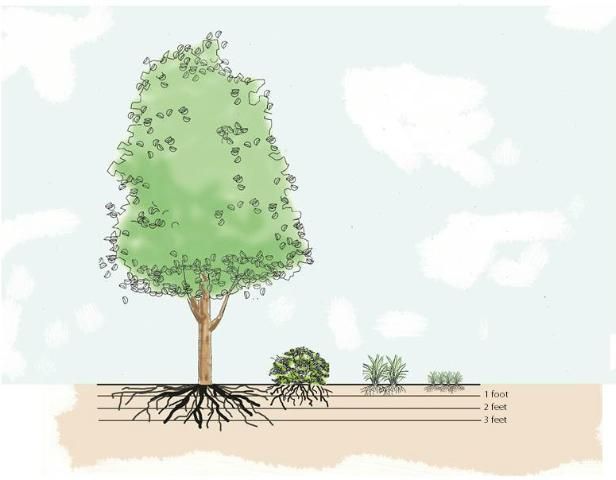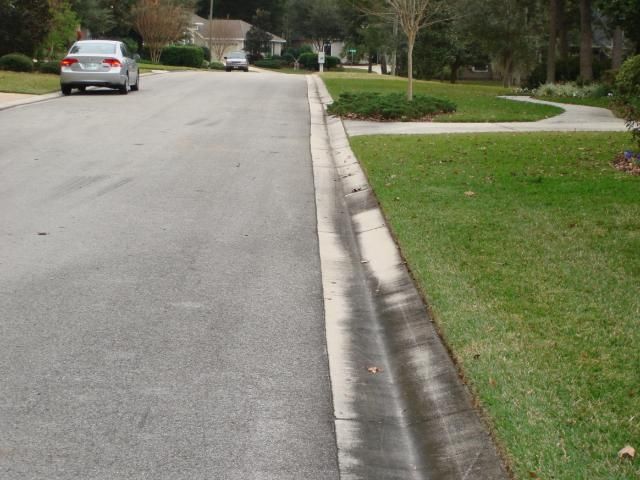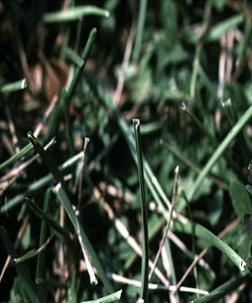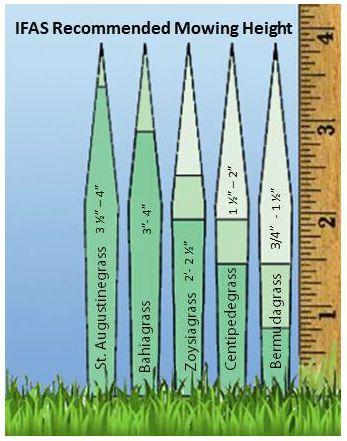This publication is part of a series developed to assist Florida homeowners with managing their landscapes to reduce environmental impacts. This is a joint publication of multiple departments and programs in UF/IFAS, including the Florida-Friendly Landscaping™ program, the Department of Soil and Water Science, the Environmental Horticulture Department, and the Center for Landscape Conservation and Ecology. This fact sheet was produced with support from the Florida Turfgrass Association through a Florida Department of Agriculture and Consumer Services Specialty Crops Block Grant.
For the rest of this series, visit https://edis.ifas.ufl.edu/topic_series_environmental_landscape_management.
Introduction
Proper irrigation management is critical to conserve and protect water resources and to properly manage nutrients in the home landscape. How lawns and landscapes are irrigated directly impacts the natural environment, so landscape maintenance professionals and homeowners must adopt environmentally-friendly approaches to irrigation management. After selecting the right plant for the right place, water is the next critical factor to establish and maintain a healthy lawn and landscape. Fertilization is another important component of lawn and landscape maintenance, and irrigation must be applied correctly, especially following fertilization, to minimize potential nutrient losses. This publication supplements other UF/IFAS Extension publications that also include information on the role of soil and the root zone in irrigation management. This publication is designed to help UF/IFAS Extension county agents prepare materials to directly address nutrient losses from lawns and landscapes caused by inadequate irrigation management practices.
When fertilizer is applied appropriately at the correct time and rate, a healthy plant root system takes up the majority of the nutrients. Fertilizer is more susceptible to leaching or runoff if misapplied or not targeted to the root system, or if the turfgrass is over-watered. Nonpoint source pollution can be caused by over-watering in two main ways. The first is leaching or percolating through the soil beyond plant roots. Irrigation runoff transports sediment, soil, and landscape clippings. The second way is if fertilizer was recently applied and is not irrigated in, it can also be transported as runoff. The nitrogen and phosphorus in the fertilizer can cause nonpoint source pollution in streams, lakes, and water bodies.
What Soil Characteristics and Properties Should Be Considered with Irrigation Management?
Several factors may lead to irrigation problems in the residential landscape. These include the following:
-
Lack of understanding about urban soils
-
No familiarity with the different water requirements of landscape plants, including the water required during plant establishment and the water needs based on species, season, soil type, shade in the landscape, etc.
-
Lack of attention to proper design, maintenance, and management of the irrigation system
Soil Water-Holding Capacity
Soil water-holding capacity is affected by soil texture (i.e., proportional sand, silt, and clay content of the soil). Most native soils in Florida are sandy in texture with low water-holding capacities. Sandy soils typically hold no more than 0.75 inches of water per foot of soil depth. When this water-holding capacity is exceeded, mobile nutrients such as nitrate-nitrogen can leach below the root system if fertilizer has been recently applied and has not been taken up by the plant roots. Many homeowners are not aware of their soil texture and the low water-holding capacity of sandy soils. If homeowners apply more water than the soil can hold, they will exceed the soil water-holding capacity. Also, failure to use rain shutoff devices or soil moisture sensors to bypass the irrigation system's schedule during rain can lead to water applications that exceed the soil water-holding capacity.
Root Zone
The root zone is the volume of soil inhabited by the plant's root system (Figure 1). Different landscape plant species have different root zones. For example, landscape shrubs have a deeper root zone than annual plants and turfgrass. The root zone usually enlarges as the plants grow. Knowing how deep the root zone extends is a key to knowing the maximum amount of water that may be applied when irrigating. When the water moves below the root zone, mobile nutrients such as nitrate-N may move below the root zone and out of the plant's reach.

Credit: Claire Lewis
Soil Compaction
Soils are disturbed and compacted when home sites are developed. Heavy machinery and foot traffic cause soil compaction. Even sandy soils can be compacted, but compaction is especially serious when clay is added to the soil as fill during the home or landscape construction process. Compaction problems often are not corrected when the landscape plants and lawns are installed. Water does not easily penetrate compacted soils and may run off the surface, taking soil and associated nutrients with it. This problem can be serious on sloped areas (Figure 2).

Credit: George Hochmuth
Landscape plants cannot develop normal, deep root systems in compacted soils. When the root zone is shallow, then the available water quantity is reduced and plants may wilt more frequently, resulting in poor plant health. Homeowners may try to compensate with excessive irrigation, which wastes water. Lawns with compacted soil may need core aeration to allow water and air to penetrate into the root zone to increase plant growth.
Plant Water Needs
Plant species vary in their water needs, and plants with similar water requirements should be grouped together in an irrigation zone. Areas of plants grouped together based on similar water needs are called hydrozones. For example, turfgrass and established landscape plants should not be zoned together. Drought-tolerant plants can be grouped separately from plants that require more water. Identifying hydrozones within the landscape helps to ensure water needs are being met without over-applying water.
Irrigation Design
Irrigation design is an important aspect of efficient water use in the landscape. Improper zoning and improper selection of irrigation emitters can lead to challenges in applying the correct amount of water to plants. Not regularly maintaining your irrigation system can also contribute to water not being applied efficiently.
Irrigation Management
Scientists are currently studying irrigation management technologies that will help homeowners determine when to irrigate. These studies have focused on increasing the automation of irrigation by determining soil moisture and plant water use and using that information for managing irrigation. A landscape and irrigation study of homes in the Central Florida Ridge area found that on average 62% of potable water was used for landscape irrigation (Haley et al. 2008). One study showed that automated, in-ground irrigation systems used 47% more water than non-automated, aboveground systems (Mayer et al. 1999). These results occurred because in these cases homeowners did not change the irrigation scheduling of the automated system during times of rain or when the plant water needs changed. Similar results have been observed in Florida (Davis and Dukes 2012).
A typical homeowner may use 50% or more of the home's total water consumption for irrigation (Davis and Dukes 2012). Reducing irrigation water applications can result in significant financial savings. Further, improving irrigation management also can reduce soil and nutrient losses from the home to groundwater and local water bodies.
What Can You Do To Properly Manage Irrigation in the Landscape?
You can do many things to reduce water use and potential environmental impacts that could be caused by the irrigation problems presented above. The first action is to implement a good irrigation design. Homeowners should irrigate wisely and fertilize appropriately. Consult the FAWN website (Florida Automated Weather Network) for up-to-date environmental conditions (http://fawn.ifas.ufl.edu), and follow the irrigation Best Management Practices (BMPs) listed below:
1. Know the Irrigation Regulations in Your Area
-
In many parts of Florida, irrigation frequency (e.g., time of day, day of week, etc.) is regulated by water management districts. Know the regulations in your area and comply with the law.
-
By Florida law, automatic irrigation systems must have a functioning rain sensor or other device to bypass irrigation if adequate moisture is present. Licensed contractors are required by law to install, repair, or replace these control devices if they are not installed and working properly before doing any other work on an irrigation system (Section 373.62, Florida Statutes).

Credit: Laurie Trenholm
2. Follow Proper Irrigation Design
-
Runoff and leaching due to inappropriate irrigation practices can be minimized by proper irrigation system design, maintenance, and management.
-
A well-designed and well-managed irrigation system properly applies only the amount of water required for healthy plants. When feasible, irrigation systems should be designed to separately serve turf and non-turf areas. These include rotor zones for turf, and sprayers or microirrigation zones for landscaped beds. Sprayers also can be used for small or narrow areas of turf. See Zazueta and Haman (2011) for more information (https://edis.ifas.ufl.edu/ae027).
3. Perform Regular Irrigation System Maintenance
-
Check for and repair leaks.
-
Unclog and replace broken sprinkler heads.
-
Point sprinkler heads at plants, not driveways or sidewalks.
-
Prune plants that interfere with irrigation spray patterns.
-
An irrigation schedule based on real-time water needs of the landscape can be determined by using an evapotranspiration (ET) controller instead of a typical time clock. See the irrigation scheduling tool on FAWN (http://fawn.ifas.ufl.edu).
-
Schedule irrigation based on seasons and restrictions imposed by the water management district.
-
For more information, see Dukes (2011) (https://edis.ifas.ufl.edu/ae436), McCready, Dukes, and Migliaccio (2013) (https://edis.ifas.ufl.edu/ae451), Trenholm and Unruh (2012) (https://edis.ifas.ufl.edu/), Trenholm, Unruh, and Cisar (2012) (https://edis.ifas.ufl.edu/lh025).
4. Calibrate the Irrigation System
-
Even an efficient irrigation system can waste water if it is left on too long. Make sure you know the water application rates of your system by measuring the water applied by a sprinkler over a set period of time. Use catch-cans spread on the lawn to check the uniformity of water application. For more information, see Trenholm, Unruh, and Cisar (2009) (http://ufdc.ufl.edu/IR00003389/00001).
5. Use Microirrigation
-
Micro-spray or mister-spray irrigation systems apply water closer to the root zone of landscape plants.
-
Drip irrigation systems can be used for many areas of a landscape, including annuals, shrubs, or vegetable gardens, but they are not recommended for turf. An advantage of drip irrigation is that the leaves are not wetted during the irrigation cycle. Wet leaves can provide a good environment for foliar diseases.
6. Irrigate According to Plant Needs
-
Turf and landscape plants have different water, fertilizer, and maintenance needs. To conserve and protect water resources and make maintenance easier, design an environmentally friendly landscape that includes low-maintenance plants, and group plants in beds according to water requirements.
-
Irrigation needs change throughout the year, and most plants go through a period of reduced growth or dormancy in the winter. Further, frequent rainfall in the wet season may reduce the need for irrigation. Research has indicated that homeowners irrigated incorrectly in the late fall and winter because of the inconvenience of changing the time clock or a general misunderstanding of how much water to apply during the various parts of the year. Be sure to change the frequency of irrigation seasonally, but apply the same amount year-round.
-
After applying fertilizer, be sure to irrigate it in with enough water so that it moves the granules from the leaf blades or soil surface to just below the soil line. This usually requires about ¼ inch of water. Irrigating in excess of this amount can increase nutrient leaching or runoff.
-
Do not water your landscape if it rained in the past 24 hours or if rain is forecast in the next 24 hours.
7. Add Organic Matter and Till Soil To Remove Compaction in Landscape Plantings
-
Any time landscapes are installed or renovated is the appropriate time to deal with soil compaction.
-
Adding organic matter such as compost to the soil will improve water- and nutrient-holding capacities and reduce soil compaction.
-
Soil core aeration may be needed for compaction associated with high-traffic areas.
8. Let Your Lawn and Plants Tell You When To Apply Water
-
Folding leaf blades. Slightly drought-stressed lawns show lengthwise curling of leaf blades. This is a natural response of the plant, and it is an attempt to minimize water loss from the leaves (Figure 3). Lawns should be irrigated when this drought-stress symptom starts to show.
-
Blue-gray color. Drought-stressed lawns turn from green to bluish-gray.
-
Footprints remaining visible. Footprints or mower tire tracks remain visible on a drought-stressed lawn long after they are made.
-
Plant wilting may be observed on landscape plants under drought stress.
9. Encourage Deep Roots
-
Know your soil. By digging some holes you can observe your soil and the layers of soil textures. This knowledge can help you predict the rooting zone.
-
One way to help your lawn and landscape plants endure drought is to encourage deeper rooting. Irrigate only when the grass begins to show one of the four signs of drought stress listed above.
-
When you do water, apply the proper amount of water. Use an irrigation scheduler tool. Typically no more than ½–¾ inch of water should be applied for a single irrigation event. These practices increase rooting depth and increase tolerance to drought and other stresses.
-
Apply water where it is needed, resulting in minimal water lost to evaporation or wind drift.
10. Mulch Plants
-
Mulch helps keep moisture in the soil around your plants, reducing irrigation needs.
-
Homeowners can choose from many different kinds of mulch, such as pine bark, yard waste compost, or pine needles (pine straw). Typical recommendations call for applying mulch 2–3 inches deep around trees, shrubs, flowers, and vegetables.
-
Keep mulch away from tree trunks to reduce the potential for diseases.
11. Mow Correctly
-
Proper mowing is another important cultural practice that can impact turf health. Raise your mowing deck to the highest recommended setting for your grass type to promote a healthy root system, which makes your grass more stress tolerant.
-
Do not remove more than one-third of the grass blade at each mowing (Figure 4).
-
Keep mower blades sharpened.
-
The goal of correct mowing practices is partly to maximize water-use efficiency of the turfgrass.

Credit: Laurie Trenholm
Summary
Proper irrigation management is critical to water conservation, protection of water bodies, and proper nutrient management. Homeowners should incorporate appropriate landscape management and irrigation practices to lessen their impact on the natural environment. Overwatering does more than deplete the water supply; it can contribute to pollution through runoff or leaching and makes plants more prone to disease and pests. Nutrient leaching and runoff from landscape fertilizers can be minimized by proper irrigation system design and management and by following the irrigation Best Management Practices (BMPs) outlined here and in the Florida Yards and Neighborhoods Handbook (2009).
References and Resources
Davis, S. L., and M. D. Dukes. 2012. "Landscape Irrigation with Evapotranspiration Controllers in a Humid Climate." Transactions of the ASABE 55 (2): 571–580.
Dukes, M. D. 2011. Summary of IFAS Turf and Landscape Irrigation Recommendations. AE436. Gainesville: University of Florida Institute of Food and Agricultural Sciences. https://edis.ifas.ufl.edu/ae436.
Florida Yards and Neighborhoods Handbook. 2009 (2nd printing). A Florida-Friendly LandscapingTM publication. http://fyn.ifas.ufl.edu.
Haley, M. B., M. D. Dukes, S. Davis, M. Shedd, and B. Cardenas-Lailhacar. 2008. Energy Efficient Homes: The Irrigation System. FCS3274. Gainesville: University of Florida Institute of Food and Agricultural Sciences. http://ufdc.ufl.edu/IR00002113/00001.
Mayer, P. W., W. B. DeOreo, E. M. Optiz, J. C. Kiefer, W. Y. Davis, B. Dziegielewski, and J. O. Nelson. 1999. Residential End Uses of Water. Denver, CO: American Water Works Association Research Foundation. http://www.waterrf.org/PublicReportLibrary/RFR90781_1999_241A.pdf.
McCready, M. S., M. D. Dukes, and K. Migliaccio. 2013. Basic Repairs and Maintenance for Home Landscape Irrigation Systems. AE451. Gainesville: University of Florida Institute of Food and Agricultural Sciences. https://edis.ifas.ufl.edu/ae451.
Trenholm, L. E., and J. B. Unruh. 2012. Let Your Lawn Tell You When to Water. ENH63. Gainesville: University of Florida Institute of Food and Agricultural Sciences. https://edis.ifas.ufl.edu/ep054.
Trenholm, L . T., J. B. Unruh, and J. L. Cisar. 2013. Watering Your Florida Lawn. ENH9. Gainesville: University of Florida Institute of Food and Agricultural Sciences. https://edis.ifas.ufl.edu/lh025.
Trenholm, L. T., J. B. Unruh, and J. Cisar. 2009. How to Calibrate Your Sprinkler Irrigation System. ENH61. Gainesville: University of Florida Institute of Food and Agricultural Sciences. http://ufdc.ufl.edu/IR00003389/00001.
Zazueta, F. S., and D. Z. Haman. 2011. Potential Impacts of Improper Irrigation System Design. AE73. Gainesville: University of Florida Institute of Food and Agricultural Sciences. https://edis.ifas.ufl.edu/ae027.